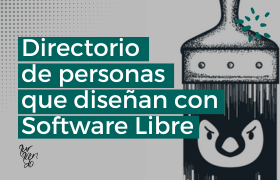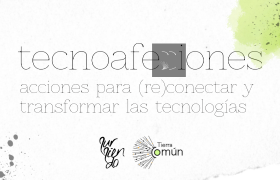Tool for the Systematization of Experiences in Digital Skill-Building Accompaniments
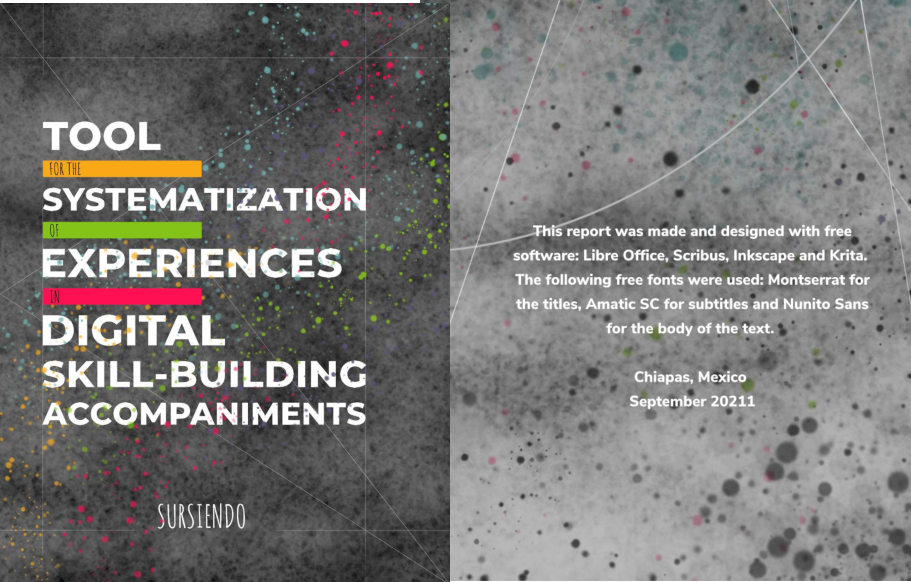
Introduction
From time to time I walk backwards,
it is my way of remembering,
if I only walked forward,
I could tell you how oblivion is like.
Humberto Ak’abal
Systematization can seem like a considerable challenge even though it is a diverse and enriching exercise that allows us to improve our work in multiple dimensions. In our case, three broader actions took place simultaneously:
1. Regular development of accompaniments in digital security with social organizations.
2. Construction of our methodological systematization tool that we would use to review those processes.
3. Performance of our systematization on the experience of accompanying.
It was a constant back and forth from theory to practice. To develop these last two actions, we overhaul existing documentation. In this regard, we based the methodology on popular education and community work experiences, which we later formalized as a guiding method.
Since our beginnings -back in 2011- Sursiendo has been interested in building bridges between the fields of technology, groups, and communities, as well as between people and their contexts, and between diverse formats and experiences. We are inspired by linking processes that may look different at first glance. Hence, we build ourselves from a critical perspective of technologies, relying on popular education and free software to accompany the defense of human and collective rights of the land and territory as a way to open space for dialogue, meeting, debate, and collective reflection.
With years of experience and having worked with various formats, we decided to dedicate time to a systematization exercise; to conceptualize the practice that would allow us to do both: a review with a critical distance of the experiences of accompaniment in digital security, and give meaning to the next course. By “experience”, we refer to what Zúñiga López and Zúñiga Preciado (2014) name as “what has been lived, what has been felt, what has happened, what has been thought, implies actions, the theories, the feelings, the political, historical, cultural context, not as separate parts one from the others, but interrelated with each other with a certain logic that is what gives it meaning ” (p. 73). We wanted to start a collective reflection; connecting with a tender self-criticism would allow us to unveil our actions to know their deep sense and thus, recognize and willingly share the learnings that emerged from the process.
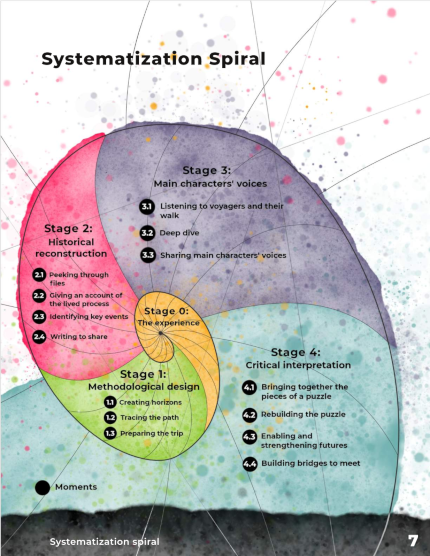
There were several analysis that prompted us to do this. The field of digital care, digital self-defense or digital protection intended for groups and individuals defenders of human rights, is relatively new compared to that of integral protection. However, due to the characteristics of the world in which we live, it is a significant field in everyday life. Such is the relevance that, at the time of writing this introduction, new insights surfaced regarding government surveillance through malware, Mexico being mentioned as an example again. The Pegasus Project revealed that the military-grade spyware, belonging to the already questioned Israeli company NSO Group, has been used to monitor activists, journalists, human rights defenders, politicians, academics, among other «people of interest» around of the world.
Even considering that digital protection is an increasingly part of integral protection, there are few in-depth studies on how we are conducting accompaniment of groups and defenders, how we can strengthen them and what other tools (human and technical) may be necessary to reinforce our field. Human rights defenders are a specific community that face risk situations according to their context. Reviewing our own practices as companions will help to strengthen the defense of human and collective rights themselves.
From the very moment we reflected on developing our experience systematization (which findings we shared at the beginning of 2021); we were building a methodological tool as an invitation for this exercise to be carried out by other groups that accompany defenders in strengthening their digital care and thus enrich the dialogue about and of our duties.
We are no experts in the task of systematization. However, we had previously gone through experiences of this type. We knew, for example, that documenting (which would only be the collection and ordering of an experience), evaluating (analyzing, measuring, or assessing the results obtained in an experience), or investigating (an exercise that seeks to contribute to the construction of knowledge) are easily confused with systematization; which Sursiendo defines as “the process of going through an experience; recovering, organizing and analyzing information for further interpretation; transforming through sharing lived experience” (Sursiendo, 2021: 9).
The present methodological tool for the systematization of experiences focused on accompaniment processes in digital security for communities of human rights defenders, and the how-to use guide arises from nurturing our own experience with the review of the work of giants such as Oscar Jara, Rosa Elva Zúñiga, Ana Bickel or ÁBACOenRed. We consider this tool, the guide, and its files to pave the way for other groups who want to make an in-depth review of their accompaniment processes. We wanted to share it in a unified format to promote that more systematizations are possible.
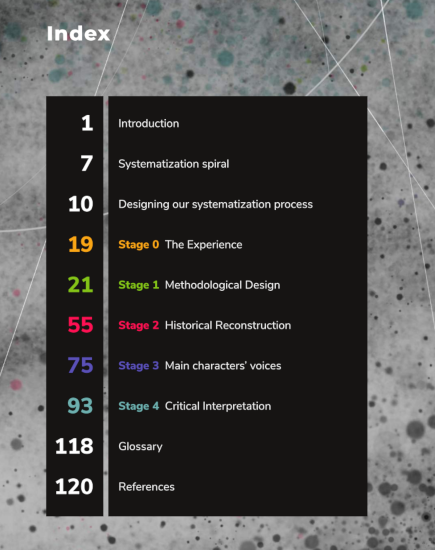
The guide is divided into ten sections: In the first, you will find a diagram that shows the general path of systematization, what we call the Systematization spiral. The second section, titled «Designing our systematization process,» provides key aspects to consider when planning a systematization of experiences; it has to do with who participates in each stage, details about the time to develop them, the modalities for working together -either in person or online-; other elements to consider, and the financial resources necessary to carry it out. Sections three to seven deal with the stages to follow in the systematization process, with a description of the moments that comprise it and the tools that may be useful to develop it. The last sections correspond to conclusions, glossary, and references.
Given that a good part of this process took place during the COVID-19 pandemic; you will see that we refer to both: work that can be done in person (always preferable due to greater value-added from face-to-face conversations), and online (resuming Oscar Jara’s proposal which invites us to make our technological approach consistent with our pedagogical project and an ethical foundation that gives it meaning).
It is essential to mention that this guide is not intended as a recipe. We present it with an open license to allow users to mix it up and share it again: enriched with their routes, considering the diverse contexts where their practices are developed.
If you decide to do them, we hope that these exercises will serve your projects by adding collective knowledge in the form of inspiration, guidelines, and ideas to build an insubordinate digital culture.



